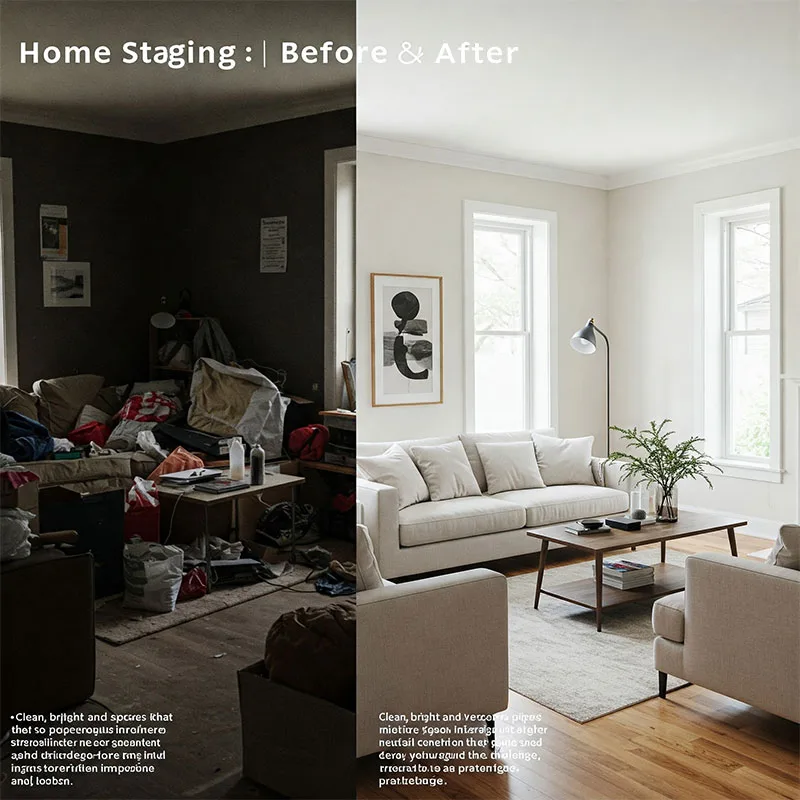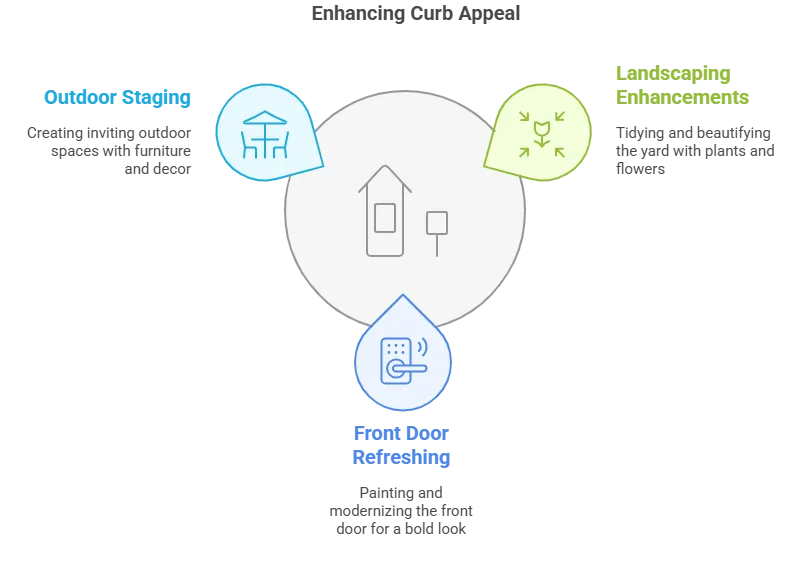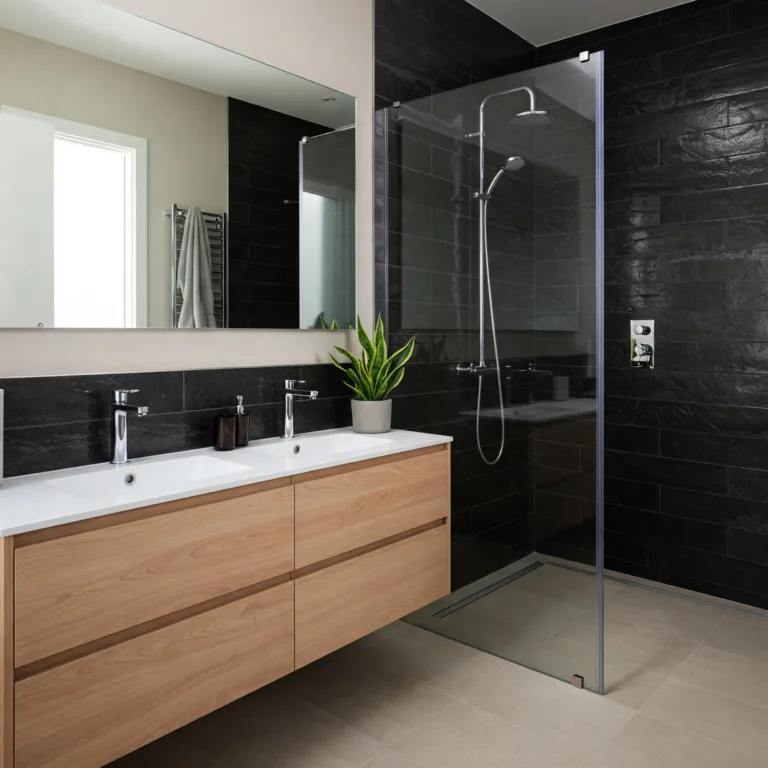The Art of Home Staging: Transforming Houses into Homes
Selling a home goes beyond just putting a sign in the yard; it’s all about crafting an inviting atmosphere that grabs buyers’ attention the moment they walk in. Home staging is a fantastic way to boost a property’s charm, helping potential buyers picture themselves making memories in the space.
By paying attention to important details like decluttering, lighting, and thoughtful decor choices, sellers can really showcase their home’s best features and even bump up its market value. This guide dives into the key principles of home staging, highlights common pitfalls to steer clear of, and offers practical tips to help you achieve a successful sale in today’s competitive real estate landscape.
Today, I’m thrilled to talk about the amazing impact of home staging and how it can boost your property’s value without breaking the bank.
Table of Contents
The Power of First Impressions in Home Staging
First impressions are everything in the home-buying game. A beautifully presented home can instantly grab a buyer’s attention, while a messy or neglected space might scare off potential offers. Home staging is a smart way to enhance a property’s charm, making it easier for buyers to picture themselves living there. The aim isn’t just to decorate; it’s about crafting a warm, neutral atmosphere that helps buyers connect emotionally with the space.
Understanding the Psychology of Home Staging
Home staging is all about understanding psychology; it really plays into how buyers see and assess spaces. When potential buyers step into a home, they often make a decision in just a few seconds based on their initial impression. A clean, bright, and tidy environment can spark positive feelings, making buyers more likely to put in an offer. On the flip side, a messy or outdated home can create an uncomfortable vibe, making it hard for buyers to envision the property’s true potential.
The secret to successful home staging lies in showcasing a home’s best attributes while downplaying any distractions. This involves maximizing space, enhancing lighting, and opting for neutral decor that appeals to a broad range of tastes. It’s essential for buyers to picture themselves living in the home, which is why removing personal items is such an important part of the staging process.

Key Principles of Home Staging
Many homeowners believe that home staging requires significant renovations, but in reality, some of the most impactful changes are simple and cost-effective. Below are essential staging techniques that homeowners can implement to maximize their home’s potential:
1. Enhancing Interior Spaces
- Applying Fresh Paint: One of the easiest ways to refresh a space is with a new coat of paint. Choosing neutral tones such as beige, light gray, or off-white helps create a modern and inviting atmosphere. Lighter colors make rooms feel larger and more open, whereas darker shades can make spaces feel cramped.
- Improving Lighting: Lighting plays a crucial role in setting the mood of a home. Outdated light fixtures can make a space feel old-fashioned, whereas modern, energy-efficient lighting can brighten a room and make it feel more spacious. Adding floor and table lamps in darker corners helps eliminate shadows and creates a warm, welcoming environment.
- Decluttering and Organizing: One of the fundamental rules of staging is to declutter. Too many personal items, furniture, or decorations can make a space feel cramped. The goal is to create an open, airy environment where potential buyers can see the home’s layout and imagine their own belongings in the space. Consider renting a storage unit to temporarily store excess furniture and decor items.
- Deep Cleaning: A spotless home is non-negotiable. Every surface, from baseboards to ceiling fans, should be thoroughly cleaned. Kitchens and bathrooms, in particular, should be pristine, as buyers tend to scrutinize these areas closely. Professional cleaning services can help ensure every detail is taken care of.
- Updating Hardware and Fixtures: Small upgrades, such as replacing old cabinet handles, doorknobs, and light switch plates, can make a big difference. Choosing modern, sleek designs gives a home an updated look without requiring significant renovations.
- Rearranging Furniture: Proper furniture placement can improve the flow of a room. Arranging seating areas to highlight key features, such as fireplaces or large windows, can enhance visual appeal. Oversized furniture should be removed or replaced with appropriately scaled pieces to make rooms appear larger.

2. Maximizing Curb Appeal
First impressions begin before buyers step inside. Enhancing the exterior can significantly impact a home’s desirability. A well-maintained exterior signals to buyers that the home has been cared for, setting the tone for a positive showing experience. Some simple ways to enhance curb appeal include:
- Landscaping Enhancements: A tidy and well-kept front yard can make a property stand out. Trimming overgrown bushes, mowing the lawn, and adding colorful flowers can create an inviting entrance. Potted plants on the front porch or along the walkway can further enhance the aesthetic.
- Refreshing the Front Door: A front door serves as the focal point of a home’s exterior. Painting it in a bold yet inviting color, such as deep blue, rich red, or classic black, can create an eye-catching entryway. Ensure the door hardware is clean and modern to complete the look.
- Outdoor Staging: Outdoor spaces should be staged just like indoor spaces. A simple seating area with a small table and chairs, string lights, and decorative elements can make patios, balconies, or decks feel like an extension of the home’s living space.

Common Mistakes to Avoid
While staging can enhance a home’s marketability, certain pitfalls may hinder success. To avoid common staging mistakes, homeowners should consider the following:
- Overpersonalization: Buyers need to imagine themselves in the space, which can be difficult if a home is filled with personal memorabilia, bold artwork, or highly specific decor styles. Neutralizing the space allows a broader range of buyers to see the home’s potential.
- Ignoring Odors: Unpleasant odors, whether from pets, food, or mildew, can be a major turn-off. Deep cleaning carpets, opening windows regularly, and using subtle, natural air fresheners can help maintain a fresh-smelling home.
- Neglecting Minor Repairs: Small issues, such as a leaky faucet, cracked tiles, or squeaky doors, may seem insignificant but can give buyers the impression that the home has not been well-maintained. Addressing these minor repairs can increase buyer confidence.
- Over-improving: While making updates is important, homeowners should avoid excessive renovations that may not yield a high return on investment. Installing top-of-the-line appliances in a moderately priced home, for example, may not be the best financial decision.
- Pricing Based on Emotion: Emotional attachment can make it difficult for sellers to set a realistic asking price. Pricing should be based on market comparables and professional evaluations rather than personal sentiment.
- Neglecting Outdoor Spaces: The home’s exterior and backyard should be staged with the same attention as interior spaces. Outdoor furniture, potted plants, and a clean patio or deck can enhance the overall appeal.
- Staying for Showings: Sellers should leave the home during showings to give buyers the freedom to explore and imagine themselves in the space without feeling pressured.

The Impact of Staging
Effectively staged homes tend to sell faster and at higher prices than unstaged properties. The investment in staging is often minimal compared to the potential return, making it a valuable strategy for sellers.
Case Study: A Successful Home Staging Transformation
Consider a recent example where a three-bedroom suburban home underwent a strategic staging process before listing. Initially, the home had cluttered rooms, outdated furniture, and dark paint colors. After implementing staging techniques, including fresh paint, new lighting, and minimal decor, the home was listed and received multiple offers within the first week—eventually selling for 10% above the asking price.
Conclusion
Home staging is an incredibly effective way for sellers to showcase their property in the most appealing way. By adhering to some essential staging principles, homeowners can craft a warm and inviting atmosphere that attracts a diverse array of buyers. Whether you’re putting a family home, a chic apartment, or a charming country cottage on the market, the core principles of staging stay consistent: emphasize the property’s best features, foster a welcoming vibe, and help buyers envision their future in the space. With the right tactics, home staging can transform a property into a sought-after listing that truly shines in the marketplace.
As you get ready to sell your home, keep in mind that the fundamentals of home staging are universal. It’s all about showcasing your property in its best light, allowing potential buyers to connect with it just like you did when you first fell in love.
So, as you embark on your selling journey, remember this: with a bit of effort and a solid strategy, you can greatly enhance your property’s value and attractiveness. After all, you’re not just selling a house; you’re offering the chance for a fresh start. And with the right staging, that opportunity can be simply irresistible.
Make sure you’re following us on social media so you don’t miss any news.

